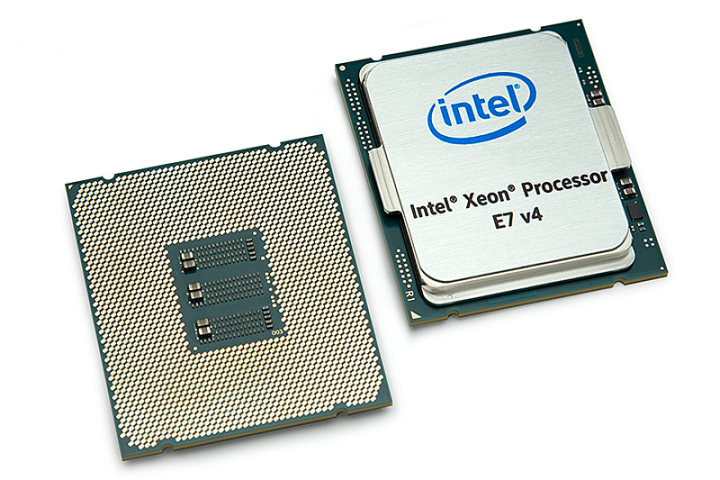
That doesn’t mean that Intel doesn’t have any market segments where it can be fully confident of remaining the performance leader. Its Xeon line remains the stuff of servers and other high-performance applications today and Intel fully intends on maintaining its superiority with the new Xeon E7-8894 v4, according to The Tech Report.
On Thursday, the Xeon E7-8890 v3 is Intel’s high-end option, running on the Haswell architecture and offering 18 cores and 32 threads with Hyper-Threading and a thermal design power (TDP rating of 165W). Now, Intel announced the E7-8894 v4, which manages to pack in 24 cores — running 48 threads given its Hyper-Threading support — at 2.4GHz with Turbo Boost up to 3.4GHz, all of it staying within the same 165W TDP as the previous generation.
Intel pegs the increase at “3.69 times faster” than the Westmere Xeon E7 8870 and, compared more directly against the E7-8890 v3, performance increases of 25 to 50 percent can be expected. Regardless, the E7-8894 v4 will be a monster when plugged into servers supporting up to eight sockets and 24TB of RAM per node.
Of course, Intel’s new performance leader will be a price leader as well, coming in at a hefty $8,898. A fully stocked server with eight CPUs installed and plugging away crunching some serious numbers will, therefore, run more than $71,000 before any other system costs are considered.
Intel likely justifies that pricing level given support for all of the usual Xeon goodies such as NetBurst microarchitecture, along with the fact that anyone who needs this kind of performance will be willing to pay for it. For those people, the new chips are expected to be available for purchase in the first quarter of 2017.
Editors' Recommendations
- Intel’s Core i9-13900KS hits 6GHz out of the box, but there’s a catch
- Head-to-head: Intel Core i7-12700H vs. AMD Ryzen 9 6900HS
- AMD Ryzen 7 5800X3D shines in gaming benchmarks, beats Intel
- AMD Ryzen 9 3900X vs. Intel Core i9-9900K
- Intel Core i3 vs. Core i5 CPUs

